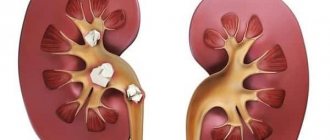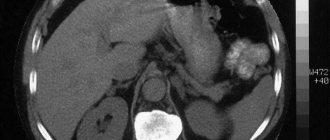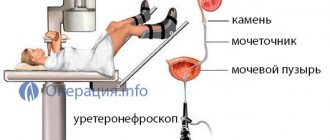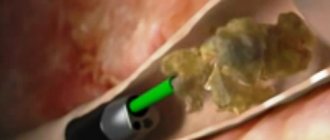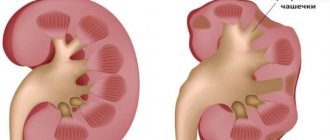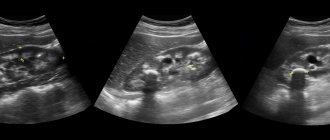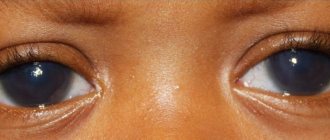How do stones come out?
Patients often ask: can kidney stones dissolve? It is impossible to answer this unequivocally, since the formations differ in their chemical composition. So, there are urate, oxalate, phosphate, cystine and mixed stones. The size of the stone, which can vary from 1 mm to 10 cm in diameter, also matters. It is these characteristics that largely determine the treatment of the condition and a number of measures to remove the stone.
For small lesions, conservative treatment is indicated. This includes taking medications and following a diet. Medication is aimed at dissolving stones and reducing their parameters. The medications are taken under the constant supervision of a urologist.
When answering the question of how to help a kidney stone pass, doctors recommend diuretics and herbal decoctions and adherence to a drinking regime. When a calculus passes through the urinary tract, it may be damaged and a bacterial process may develop. To prevent it, antibacterial therapy is prescribed.
What to do and is it dangerous?
It is recommended to remove ureteral stones larger than 5 mm in any case, even if they do not bother you very much. This is especially true for X-ray positive stones located in the upper and middle parts of the ureter. Why?
- The presence of a stone in the ureter will sooner or later cause an attack of renal colic with severe pain.
- A slowdown in urine flow against the background of an existing obstruction leads to easy infection and the development of an inflammatory process - pyelonephritis.
- A stone in the ureter is an obstruction to the outflow of urine. Even if it causes incomplete blockage of the ureter, it can lead to increased pressure and dilation of the urinary tract above the obstruction, as well as the renal pelvis (hydronephrosis). Hydronephrosis, in turn, can lead to complete death of the kidney parenchyma.
If the stone size is less than 5 mm and there are no urodynamic disturbances or pain, dynamic observation is used.
How much does a calculus come out?
How long it takes for kidney stones to pass is a pressing question for all patients. The condition, known as renal colic, is accompanied by intense pain and cramping. Today, there are many traditional methods, as well as effective medical treatment protocols, for removing kidney stones without surgery.
Small formations with a sufficient amount of fluid and the use of diuretics can leave the body on their own within 48 hours. To relieve symptoms, the doctor prescribes antispasmodic drugs. According to medical statistics, stones up to 4 mm in size pass on their own with a probability of 80%; for stones with a diameter of 5-8 mm, the probability decreases to 20%. Formations with a diameter greater than 9 mm require crushing and/or surgical intervention.
Folk remedies
You can try to remove stones formed in the kidneys or bladder using folk remedies, however, this can only be done after consultation with a specialist.
- Help with pain due to the disease will be provided by a compress applied to the lumbar region. You need to take 2 tbsp. oats and pour 600 ml of water. Place on low heat, cover with a lid.
- Ripe watermelon seeds must be dried and ground to a powder. Eat 1 tsp. three times a day. The course is at least 14 days. It’s good if a person simultaneously consumes a large amount of watermelon itself.
- Run a bath with well warm water. Before taking it, do not urinate for some time and drink a herbal infusion or decoction that has an antispasmodic effect. After a quarter of an hour of taking a bath, you need to urinate, but not into the toilet, but into some container to make sure that the calculus comes out. This method works well against renal colic.
- Brew tea based on rosehip roots, horsetail, birch buds, dill seeds and bearberry. Herbal tea relieves an attack of renal colic. Drinking a drink based on herbal ingredients should be combined with physical activity. You can walk up the steps, jump rope, and squat.
- Combine freshly squeezed juice from cucumber, lemon and carrots. A greater effect can be achieved if you also add black radish juice. This drink will reduce pain and speed up the process of removing stones from the ureter.
Remove the decoction no earlier than after a quarter of an hour. After straining, you should take a piece of gauze or any fabric folded into several balls, moisten it with the broth and apply it to the lower back. Secure the top with a plastic bag or cling film and wrap it in a warm scarf.
How to avoid surgery
Whether kidney stones pass out on their own depends on the size of the stones. Since ICD is asymptomatic in the early stages, it is important to pay attention to the first warning signs of the disease. You can suspect stones based on the following signs:
- aching pain in the lumbar region;
- dull pain in the lower abdomen;
- pain after active movement (shaking, riding, physical activity);
- discomfort in the lower back after urination;
- blood in urine;
- frequent urination.
All this is a signal for a routine ultrasound and consultation with a specialist. Doctors at the State Institute of Urology successfully identify urolithiasis in the early stages and cope with the disease using conservative methods.
Why shouldn't surgery to remove kidney stones be postponed?
The most common complication is blockage of the ureter by a stone.
When a kidney is blocked by a stone, the outflow of urine becomes difficult or stops, and the kidney becomes full. The pressure inside the organ increases and blood supply is disrupted. As a result, the kidney dies.
Kidney death occurs within 3 to 6 hours.
Literally within a few hours, an inflammatory process develops, which spreads throughout the body through the bloodstream and disrupts the functioning of other organs and systems.
Delay is fraught with:
- kidney dysfunction leading to the need for lifelong dialysis or
- kidney transplant
- fatal.
From the interview “Life on Dialysis”:
We live with certain restrictions, we need to monitor our diet, monitor the level of potassium and phosphorus. And so that there is not too little calcium. I take a whole box of medications. I can’t leave Moscow anywhere. That is, it is possible, but to a place where there is dialysis, but for this you need money for dialysis and for rest.
My connection is at two, and I need to be there at half past one, get examined by a doctor, weigh myself, change clothes. They take me away at 12 o'clock, or even earlier. The procedure takes me 4.5 hours. In fact, a whole working day is spent on this. I return home at nine o'clock.
The pain can be relieved with an injection of no-shpa intramuscularly or with a hot heating pad. You can treat kidney stones using traditional methods or tablets. But all this will not solve the problem of kidney stones, but will only worsen the prognosis of the disease. Do not delay your visit to the urologist, consult on the issue of surgery today!
Therapeutic exercises for urolithiasis
Physical education plays an important role in the treatment of urolithiasis. A certain list of exercises, included in the complex of therapeutic and preventive measures, promotes the passage of stones from the urinary system. Exercise therapy for urolithiasis performs the following functions:
- increasing the efficiency of the immune system;
- improving the functioning of the urinary system;
- normalization of metabolism;
- creating conditions conducive to the passage of stones.
Important! It should be remembered that the determination of the level of physical activity, intensity and duration of exercises to remove stones is carried out taking into account the age and physical condition of the patient. The complex should be compiled in consultation with the attending physician.
During the exercises, ureteral peristalsis is stimulated, intra-abdominal pressure fluctuations occur, blood flow in the kidneys improves, and the process of urine excretion is facilitated.
In addition, regular exercise therapy strengthens the abdominal and back muscles. As you know, correct posture helps keep the kidneys in a normal position, and strengthening muscles improves blood circulation, including in the abdominal and pelvic organs. Taking this into account, it can be argued that the importance of physical education in the process of treating urolithiasis is really great. However, when performing exercises, you must follow some rules. Firstly, classes can only be started during the period of remission, or after the attack has passed. Secondly, it is necessary to maintain a drinking regime, drinking at least 1.5-2 liters of liquid daily. It is especially useful to drink water on an empty stomach in the amount of 1 liter at a time. Finally, in addition to performing a set of exercises, you should maintain physical activity throughout the day. The following may be very useful in this regard:
- breathing exercises;
- skiing;
- swimming (only in warm enough water);
- bicycle rides;
- walking;
- easy running.
All this, in addition to facilitating the process of stone passage, contributes to the overall strengthening of the body and improvement of metabolism. The effect of exercise therapy will increase significantly if you combine it with physiotherapeutic procedures and therapeutic massage.
How to get rid of stones in the genitourinary system?
In this case, the size of the stone is of decisive importance. If the stone has reached too large a size by the time it is discovered, then most likely the only way out will be open surgery. This type of surgical intervention is prescribed in the most extreme cases, when other methods of stone removal have been exhausted or are impossible. In this case, the patient is prepared for a full-scale operation. For example, removing a stone from the bladder is the following procedure:
the patient is placed under general anesthesia;- an incision is made in the suprapubic area;
- through open access to the bladder it is dissected;
- a stone (or several) is discovered and removed;
- the bladder is sutured;
- A suture is placed on the primary incision.
After such an intervention there is a long recovery period. In addition, various complications may occur as a result of the operation. It is also worth considering the high percentage of relapses of urolithiasis. In approximately 70% of cases, stones form again after some time after removal. If the stone re-forms, a repeat operation will be difficult. Considering the above, abdominal surgery is the least preferred of all possible methods.
A more gentle and very effective method is lithotripsy. This procedure is a minimally invasive or completely non-contact intervention, as a result of which the stone is crushed (crushed) and the subsequent extraction of small fragments or their removal naturally during urination.
Crushing can be carried out under the influence of ultrasonic waves or laser radiation. This method of removing stones is used when their size ranges from 5 to 20 (in some cases 25) mm.
If the stone is relatively small in size, then removal of the stone from the bladder, ureter or kidney can be provoked in various ways, without resorting to the methods described above. For this purpose, drug therapy is carried out, traditional medicine is used, therapeutic exercises are prescribed, etc. At the same time, it is necessary to follow an appropriate diet, the requirements for which can be different, sometimes even opposite, since they are dictated by the nature of the stone, namely the substance that forms it. Recommendations on diet and treatment are given by the attending physician.
